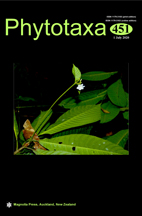Abstract
Powdery mildews are the subject of intense research due to their negative impact on agriculture or horticulture. The genetic diversity of these ascomycete fungi has only been surveyed in the last decades to investigate phylogenetic relationships and species boundaries, to propose new taxa, and to assess their biogeographic history. However, many of the resulting studies are revealing only a partial picture because of the uneven species sampling across the globe. Here, we studied three Leveillula collections occurring on wild plant species in the Iberian Peninsula, a region which lacked any previous knowledge on the genus’ genetic diversity. Our study provides the first record of L. guilanensis in Europe based on specimens from two distant localities in the Iberian Peninsula; the species was so far known only from Iran. It grew on living Chondrilla juncea and was parasitized by the hyperparasite fungus Ampelomyces quisqualis. The morphological and phylogenetic assignment of another collection to L. lanuginosa is reported as well. Furthermore, we inferred a chronogram based on an Erysiphales nrITS substitution rate that dated the crown node of Leveillula back to 22.48 million years ago. Clades including the Iberian Peninsula samples originated and diversified through the Neogene (Miocene to Pleistocene). These results suggest an overall older time frame for the evolution of Leveillula compared to previous works. All in all, the present study provides additional avenues for discussing the evolutionary and biogeographic history of this genus of powdery mildews.

